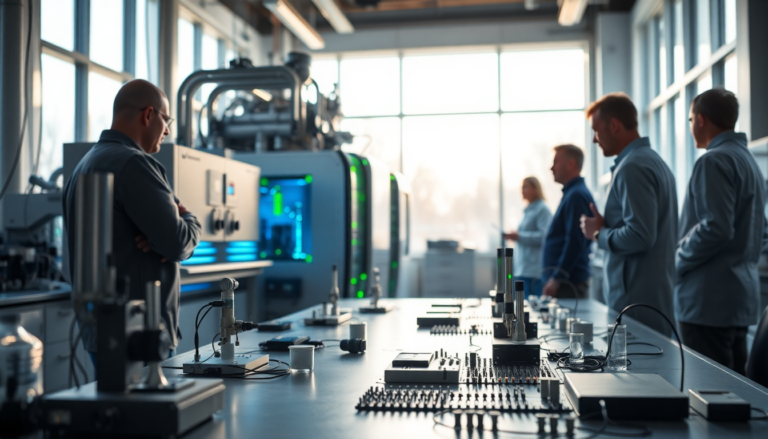Argomenti trattati
In the high-stakes world of semiconductor manufacturing, where precision is everything, a new player is making waves. Inversion Semiconductor, a fledgling startup backed by Y Combinator, is not just dipping its toes in the water; it’s attempting to create a tsunami with its ambitious plans for a compact particle accelerator that could redefine the lithography landscape. But let’s not kid ourselves. The road ahead is fraught with challenges, and the tech world is watching with a mix of skepticism and intrigue.
Disrupting the status quo in chipmaking
Creating a reliable light source for chipmaking lithography tools is akin to finding a needle in a haystack—if that needle were also capable of causing a small explosion. Currently, ASML reigns supreme with its EUV technology, but Inversion aims to throw a wrench in that machinery. Their proposed light source, a ‘tabletop’ particle accelerator, purportedly boasts an output of 10 kW—33 times more powerful than what ASML offers. Sounds too good to be true? It probably is.
This mini marvel is claimed to accelerate electrons over mere centimeters rather than kilometers, a feat that almost feels like magic. However, the reality is that such innovations demand a hefty price tag, both financially and in terms of technical expertise. The petawatt-class lasers required for their operation are not your average backyard hobbyist’s tools. No, these beasts consume power like a hungry hippo and cost an arm and a leg to maintain. And let’s not forget, unless Inversion strikes a deal with ASML or another lithography giant, they’re left scrambling to build their own systems from scratch—a task as daunting as herding cats.
The thin line between ambition and delusion
Founded in 2024 by Rohan Karthik and Daniel Vega, both armed with master’s degrees, Inversion Semiconductor presents itself as the David to ASML’s Goliath. But the reality check here is hard-hitting. They lack the experience and infrastructure necessary for mass production, and let’s be honest—having grand ideas doesn’t equate to execution. Their aspirations are lofty, but in the tech world, dreams often die faster than they can be realized.
Moreover, the LWFA method, while innovative, is still a work in progress. The electron beams produced can be as unruly as a toddler on a sugar high—unstable and unpredictable. For lithography, stability is king; any deviation leads to chaos on the production line and ultimately, financial losses. So, while their plans sound impressive on paper, the execution could crumble under the weight of practical challenges.
Collaboration or competition?
Inversion’s strategy involves not just developing a light source but also creating complete lithography tools to rival ASML directly. A bold move, indeed. However, the tech industry is littered with the corpses of startups that underestimated the complexity of competing against established giants. The integration of their LWFA-based source with existing EUV systems poses another hurdle, as it would require rethinking beam shaping and metrology systems. And let’s not forget the need for new materials and resists to make everything function as intended.
Can they really deliver? The overwhelming consensus is one of skepticism. The current landscape is not just about having the right idea; it’s about execution, testing, and validation. Without proven results, Inversion’s ambitious roadmap could easily turn into a cautionary tale of tech hubris.
The future remains uncertain
As Inversion Semiconductor forges ahead, their immediate goal is to develop a light source called Starlight, which aims to produce soft X-ray light in the 20 nm to 6 nm wavelength range. If they manage to pull this off, it could lead to breakthroughs in applications such as industrial X-ray imaging. But let’s not get too excited just yet; the tech world is rife with promises that never materialize.
In the end, Inversion’s journey is a classic tale of ambition versus reality. While they dream of revolutionizing the semiconductor industry, the barriers they face are as daunting as they come. The question remains—will they be the ones to rise above the fray, or will they become another footnote in the annals of tech history? Only time will tell, and until then, the rest of us can only watch in morbid fascination.

